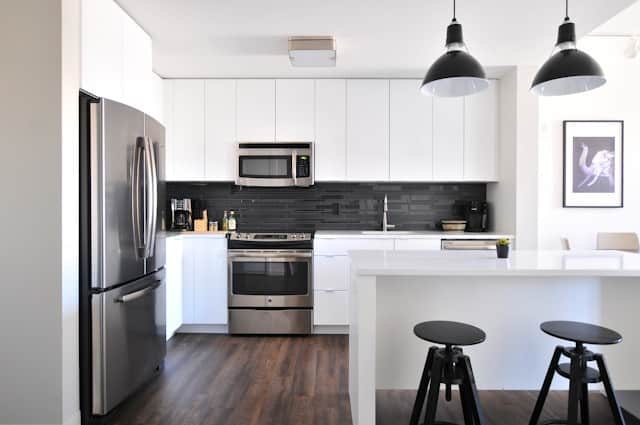What Are the Key Considerations When Designing Real Estate for Disaster-Prone Areas?

Architecture is more than just an art; it’s a science of resilience. When designing buildings for disaster-prone locales, architects must factor in the relentless forces of nature. They have to think about the potential for floods, wildfires, earthquakes, and even hurricanes. Additionally, they must consider the resilience of local communities and strive to create urban environments that are both safe and functional.
The field of design is evolving rapidly to meet these challenges, with architects, urban planners, and scholars working together to devise innovative solutions. As you navigate the complexities of real estate in disaster-prone regions, there are some key considerations to keep in mind.
A voir aussi : How to Integrate Smart Water Management Systems in Multifamily Real Estate?
Understanding the Risk
Before designing a building, it’s crucial to understand the risks associated with the land it will be constructed on. This involves assessing the potential for natural disasters and understanding the community’s ability to cope with these events.
For instance, consider an area prone to flooding. A thorough risk assessment would not only consider the likelihood and severity of floods but also how well the local community can recover from such an event. Are there efficient mitigation systems in place? How quickly can residents return to their homes after a flood?
En parallèle : How to Design Wellness-Oriented Real Estate That Supports Mental Health?
A comprehensive risk assessment requires a deep understanding of both the local physical environment and the resilience of the community itself. Therefore, it’s important to collaborate with local scholars and community leaders during this stage of planning.
Incorporating Resilience Into Design
Resilience, in the context of building design, refers to the ability of a structure to withstand and recover from disasters. In areas prone to natural disasters, designing resilient buildings is not only a matter of safety but also a necessity.
Resilient design involves considering the specific types of disasters a building might face. For instance, in a flood-prone zone, the building should be designed with elevated structures or flood barriers. These measures could be the difference between a minor inconvenience and a catastrophic loss.
Moreover, resilience also pertains to the materials used in construction. Choosing materials that can withstand the impact of specific disasters and recover quickly from damage is crucial. Some buildings even incorporate ‘self-healing’ materials that can repair themselves after minor damage, significantly enhancing their resilience.
Prioritizing Community Involvement
The community is an essential factor in disaster resilience. A well-informed and prepared community can significantly mitigate the impact of disasters. As such, community involvement is crucial throughout the entire design and building process.
Involve local residents in the planning process. They have firsthand knowledge of the area’s risk and can provide invaluable insights. Their involvement can also ensure that the building meets their needs and expectations.
Moreover, consider how the building can contribute to the community’s overall resilience. Can it serve as a disaster relief center or a refuge in times of crisis? How can it facilitate community cohesion and mutual aid? These considerations can contribute to the resilience of the entire community, not just the building itself.
Incorporating Sustainable Practices
Sustainable practices are an integral part of resilient design. Buildings account for a significant percentage of global carbon emissions, contributing to climate change—a major driver of natural disasters. Therefore, designing sustainable buildings is an effective way to mitigate the risk of disasters.
Sustainable design can involve a range of strategies from utilizing renewable energy sources to implementing water-saving measures. Moreover, sustainable buildings are more likely to be resilient to disasters as they are often designed with local conditions and resources in mind.
Legal and Regulatory Considerations
Lastly, when designing real estate for disaster-prone areas, it’s crucial to stay abreast of state and local regulations. These regulations are put in place to protect both the environment and community from potential harm.
Understanding and adhering to these laws can ensure your building is compliant with safety standards, reducing potential liability in the event of a disaster. Moreover, some regulations may offer incentives for implementing resilient and sustainable design practices.
In conclusion, designing real estate for disaster-prone areas is a complex but essential task. It requires a profound understanding of the risks, a commitment to resilience and community involvement, a focus on sustainability, and a thorough knowledge of local laws and regulations. In doing so, you can contribute to a safer, more resilient future for all.
Preparing for the Long-Term: Infrastructure, Insurance, and Preparedness
When designing real estate in disaster-prone areas, it’s crucial to think long-term. The built environment should be designed to withstand the test of time and the relentless forces of nature.
Part of this consideration involves infrastructure. Structures should be built with disaster-resistant features, such as flood barriers or earthquake-proof foundations. Moreover, the broader infrastructure- roads, bridges, utilities- should also be designed with resilience in mind. This includes ensuring access to essential services even during a disaster, which can significantly help in post-disaster recovery.
In addition to infrastructure, insurance also plays a key role. Having adequate flood or earthquake insurance can provide a financial safety net for property owners. Insurances should be considered not as an afterthought but an integral part of the design and planning process.
Lastly, disaster preparedness should be embedded into the real estate development process. This can involve creating evacuation plans, establishing disaster response protocols, or even designing buildings that can serve as emergency shelters. Preparedness can make a significant difference in mitigating the impact of natural disasters.
Long-term planning, robust infrastructure, adequate insurance, and thorough disaster preparedness are all key considerations when designing real estate in disaster-prone areas. They ensure that the built environment is not just resilient, but also equipped to support the community in times of crisis.
Understanding and Adhering to Building Codes
Building codes are a vital aspect of designing real estate in disaster-prone areas. They provide a set of standards that buildings must adhere to, ensuring that they are safe, resilient, and sustainable.
Different regions have varying building codes, and these are often based on the specific types of natural disasters they are prone to. For example, in earthquake-prone areas, building codes may require structures to be designed with specific seismic resistance features. In flood-prone areas, they may dictate the elevation level of buildings or mandate the inclusion of flood barriers.
Staying updated with building codes is not just about regulatory compliance. It’s also about risk reduction. Adhering to these codes can significantly mitigate the risk posed by natural disasters, protecting both the physical structure and the people who reside or work in it.
Moreover, understanding building codes can guide the design process, informing decisions about materials, construction methods, and even the overall design of the building. For instance, a building code might stipulate the use of certain disaster-resistant materials, which can influence the architect’s design choices.
In essence, building codes are a critical tool for ensuring the safety and resilience of the built environment in disaster-prone areas. Therefore, understanding and adhering to these regulations is a key consideration when designing real estate.
Conclusion
Designing real estate for disaster-prone areas is indeed a complex task. It involves a myriad of considerations, from understanding the risks and incorporating resilience into design, to involving the community and practicing sustainability. It also requires staying informed about local laws and building codes and preparing for the long-term through robust infrastructure, adequate insurance, and thorough disaster preparedness.
However, these challenges also represent opportunities for innovation and progress. By leveraging tools like google scholar and scholar crossref, architects and urban planners can access a wealth of research and insights to inform their designs. By engaging with the local community, they can create designs that are not just safe, but also rooted in the local context and beneficial to the community.
Ultimately, designing real estate in disaster-prone areas is about more than just buildings. It’s about creating a resilient built environment that can withstand natural disasters, support the community in times of crisis, and contribute to a more sustainable future. As climate change increases the frequency and intensity of natural disasters, this task becomes even more urgent and important. But with the right approach, it’s a challenge that architects, urban planners, and communities can rise to meet. Together, they can build a safer, more resilient, and more sustainable world.
